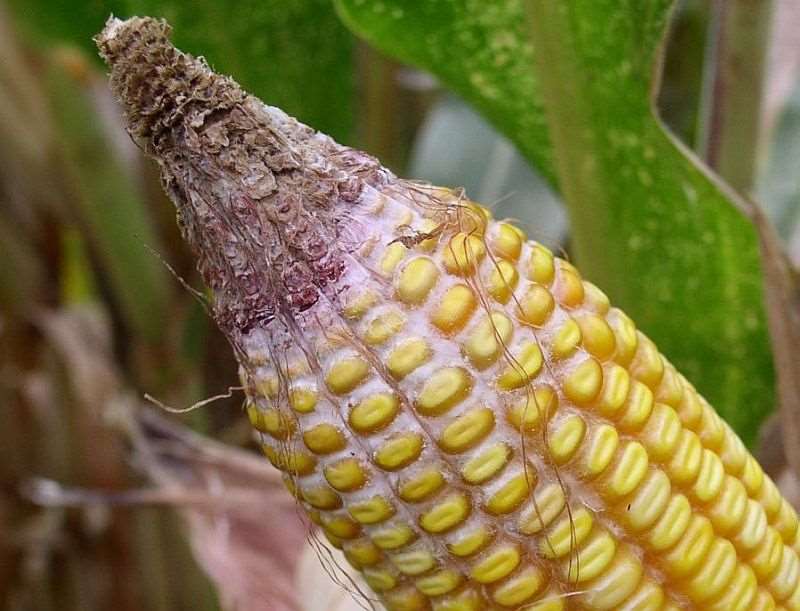Presentation made by Peter Horevaj
By Diego Flammini
Assistant Editor, North American Content
Farms.com
As farmers gear up for planting season they’ll be faced with disease management challenges.
One disease in particular, Gibberella ear rot, was the focus of a presentation made by Peter Horevaj, DuPont Pioneer research scientist.

“(It’s) a very common disease in (Ontario),” Horevaj said. “It’s been here for years and every year it’s around. It depends on the environment to which degree (the disease is) going to be a problem.”
Gibberella ear rot is caused by fungus which can overwinter in crop debris. The disease can be identified by a red or pink mold beginning at the ear tip. Early and severe infections could rot ears completely.
Since the disease could impact yield, Horevaj said DuPont Pioneer is conducting breeding experiments to determine tolerant hybrids.
“We have a breeding program in this area and conduct intensive disease scoring,” he said.
Horevaj offered a few tips to help farmers manage Gibberella ear rot in their fields.
“Number one is hybrid selection,” he said. “That’s one of the easiest ways (to manage the disease) that farmers have in their control. Based on ratings that DuPont Pioneer provides for its hybrids, (farmers) can see which hybrids have higher tolerance."

Gibberella ear rot
Photo: DuPont Pioneer
Because the pathogen can survive in residue, Horevaj said crop rotation is another important strategy.
And spraying proper triazole fungicides can also help farmers fight Gibberella ear rot.
“It’s another tool farmers can invest in,” Horevaj said.
Follow the London Farm Show on social media using the hashtag #LdnFarmShow. The show wraps up March 10.